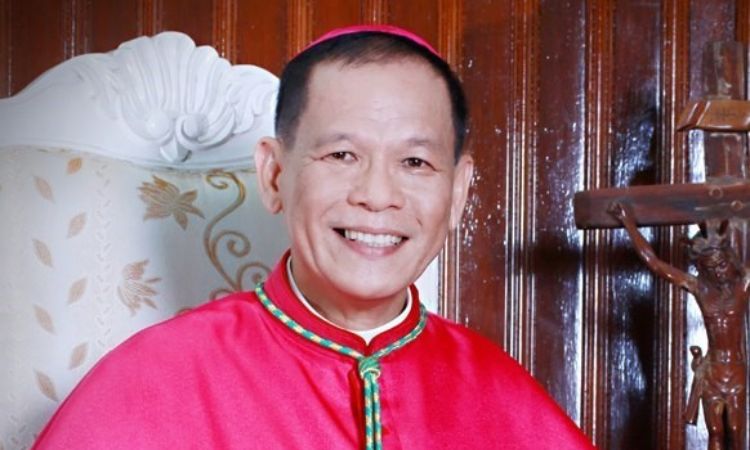
By Msgr. Regie Pamposa
Way back in 1995, Father Joe came home quietly after a long journey of seminary assignments outside the province of Capiz.
He was immediately appointed rector of St. Pius X Seminary upon the retirement of Monsignor Daniel Viloria. Father Joe came back where he once belonged and where it all started.
As the sixth rector of St. Pius X Seminary starting in 1995, Monsignor Joe persuasively and patiently introduced some radical changes in the seminary life and formation of young seminarians.
Foremost of which was his emphasis on the community life of seminary priests by having common recreations and annual outings. Notably, Monsignor Joe instilled in younger seminarians the need to break the so-called culture of seniority so prevalent at that time.
Heeding the call of the late Archbishop Onesimo Gordoncillo, the second archbishop of Capiz, who had already foreseen in 1995 the need for a separate building for college and theology seminarians in Capiz, Monsignor Joe supported and helped such initiative.
His immediate proposal to send priests abroad for higher studies in theology and philosophy in preparation for seminary and school assignments showed his impeccable sense of foresight often seen in his ministry. He certainly thinks ahead as a leader. Inevitably, he became the first rector of Sancta Maria Mater et Regina Seminarium when it formally opened in September 1999.
In February 2000, however, he was given his first and only pastoral assignment as parish priest of Sto. Tomas de Villanueva in Dao, Capiz. But after a year or so, a new journey began to unfold.
Monsignor Joe was appointed bishop of San Carlos Diocese, Negros Occidental on July 25, 2001 by St. Pope John Paul II and was ordained bishop on September 11, 2001. It looks as if his ministry as a priest is filled with journeys outside and inside the Archdiocese of Capiz, or one may say, a continuing journey.
Fast forward to 2012, Monsignor Joe made his third homecoming to Capiz, after serving so well the Diocese of San Carlos in Negros Occidental from September 2001 to 2012, where he initiated the building of 10 mission churches and three mission schools in far-flung or mountain areas.
He gladly recalled those experiences climbing mountains just to reach a particular mission church. In many ways, prior to Pope Francis, Bishop Joe has already assimilated the meaning of going to peripheries.
On January 12, 2012, the province of Capiz did not just welcome a distinguished son but also witnessed the installation of the third archbishop of Capiz, the Most Rev. Jose F. Advincula Jr., having been appointed archbishop by Pope Benedict XVI on November 9, 2011.
And immediately, new things and perspectives in leadership in the Church of Capiz began to reverberate among priests and laypeople. The late Leny Mabasa, a lay papal awardee, once mused in Hiligaynon: sa pag-abot ni Monsignor Joe, maga-arriba gid ang Capiz (with the arrival of Monsignor Joe, Capiz will soar high). Those words proved prophetic. Sadly, Leny Mabasa, the generous donor of the lot where the Cagay Seminary now stands, died a year before Monsignor Joe became a cardinal. May he rest in peace. A cardinal is now praying for him.
MISSION STATION
Archbishop Joe’s first meeting in 2012 with the Clergy of Capiz, about 120 priests at that time, was rather more prophetic if not monumental.
Usually, priests expect to get new parish assignments upon the assumption of a new bishop in a particular diocese. But Archbishop Joe’s first announcement was nothing but the creation of mission station churches all over the archdiocese.
Enriched by his pastoral experience in the Diocese of San Carlos, he is convinced that the creation of small and new churches in the mountains and far-flung barangays in the whole province of Capiz will bring the Church closer to the people and that the priests themselves will become more available to the people.
He would often repeat one pastoral reminder to all his priests: not to be comfortable but readily available for people. In many ways, Archbishop Joe has stirred and eventually molded a new pastoral approach for the Church of Capiz. He remains hopeful that someday Capiz will hold its first-ever diocesan synod in celebration of the 500 years of Christianity in the Philippines come 2021.
The establishment of mission churches is no less daunting for it requires financial and human resources, including the much-feared breaking up of bigger parishes into small churches in some towns.
But all of a sudden, growing interest and excitement ensued among laypeople upon hearing the news of having a new church nearer and closer to them. Thus, some well-meaning and generous Capizeños started to donate a portion of their lot for the construction of mission churches while most people worked hand-in-hand with their mission station-priests in various fundraising initiatives such as fun-run, raffle tickets, the offering of rice-produce, selling of shirts, candles, and solicitations both here and abroad.
The mission station churches have reinvigorated the whole Church of Capiz as laypeople have become more involved and participative in Church activities. Significantly, mission station churches have contributed to the growth of vocation to the priesthood, as more young men from far places or barangays have become interested in entering the seminary.
In eight years, 29 mission station churches were erected and built in far places and remote towns across the 17 municipalities of the province of Capiz.
Today, the Archdiocese of Capiz boasts of 64 parishes. Archbishop Joe has increased the number of churches in less than eight years, a phenomenal growth indeed, from 35 to 64 churches.
More than these, the gospel message of Christ has been brought closer to many people in far-flung, remote, obscure, and poor places. Silently yet effectively, the urgent call of Pope Francis, at the beginning of his pontificate, of bringing the Church to the peripheries finds its clearest expression in the evangelizing and trailblazing efforts of Archbishop Joe together with the clergy and the faithful of Capiz.*





